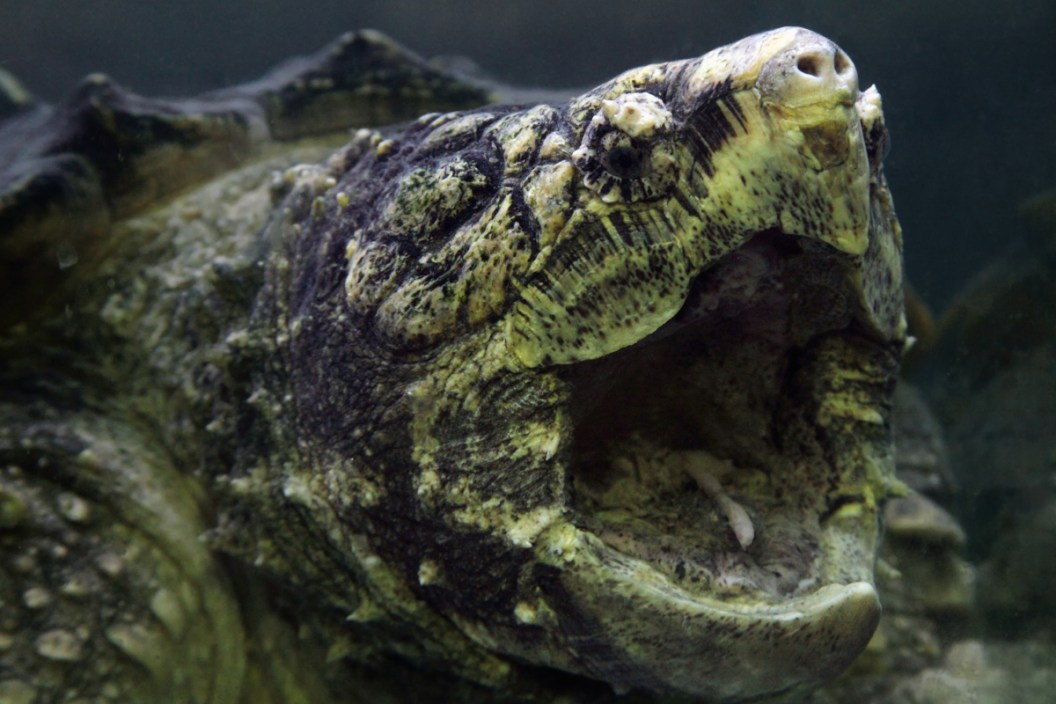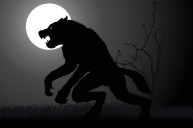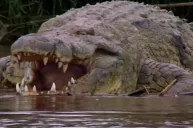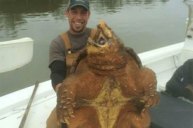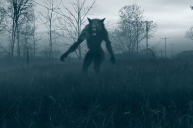The legend of the "Beast of Busco" is an oddity of Indiana history.
The world of cryptozoology is filled with strange tales of creatures that are supposedly hidden and still unknown to modern science. You have likely heard the legends of these cryptids before. Almost everyone is familiar with the standard famous ones like bigfoot and the Loch Ness monster. However, there are many small towns in North America that are home to legendary creatures of a different kind.
One of the most notable comes from the unassuming town of Churubusco, Indiana. Tucked into the corner of Whitley County about 15 miles northwest of Fort Wayne, you may notice a recurring turtle theme in the town's businesses, parks, and signage.
That is because the townspeople still remember the tales about an enormous snapping turtle that put the town on the map. It was allegedly nearly six feet across and was estimated to weigh nearly 500 pounds. This is the story of Oscar the turtle, and how the lake monster put an otherwise sleepy Ind. community on the map.
The origins of the legend.
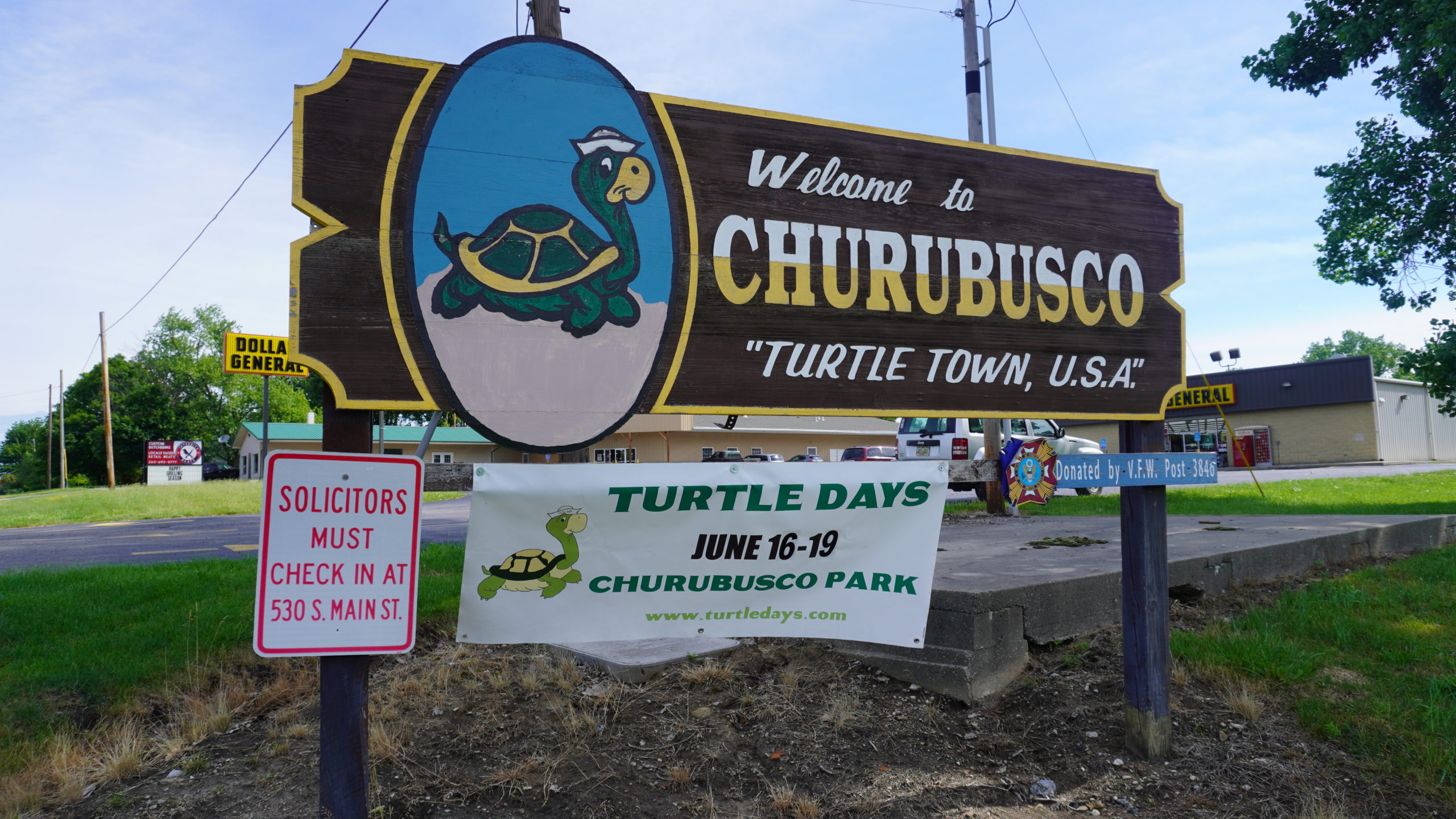
Travis Smola
Before it was "Turtle Town U.S.A.," Churubusco was a small settlement founded in 1847. This was during the Mexican-American War and the patriotic residents decided to name their new town after a major U.S. victory in Churubusco, Mexico. Things were mostly quiet for the next 50 years. In 1898, the giant snapping turtle rumors began.
The legend of a turtle with a shell bigger than a dining room table began about three miles outside of downtown Churubusco down a quiet dirt road with a small seven-acre lake today known as Fulk Lake. It was owned by a farmer named Oscar Fulk. Allegedly, he was the first to see the large turtle swimming around the small lake. There are few other details beyond that.
We do know Fulk told others of his sighting, it seems that few really cared about a big turtle living in the lake. It did not take long for the locals to forget all about the strange tale. Another 50 years passed, and Fulk's tale may have remained forgotten, were it not for the events of 1948.
The beast puts Churubusco on the map.
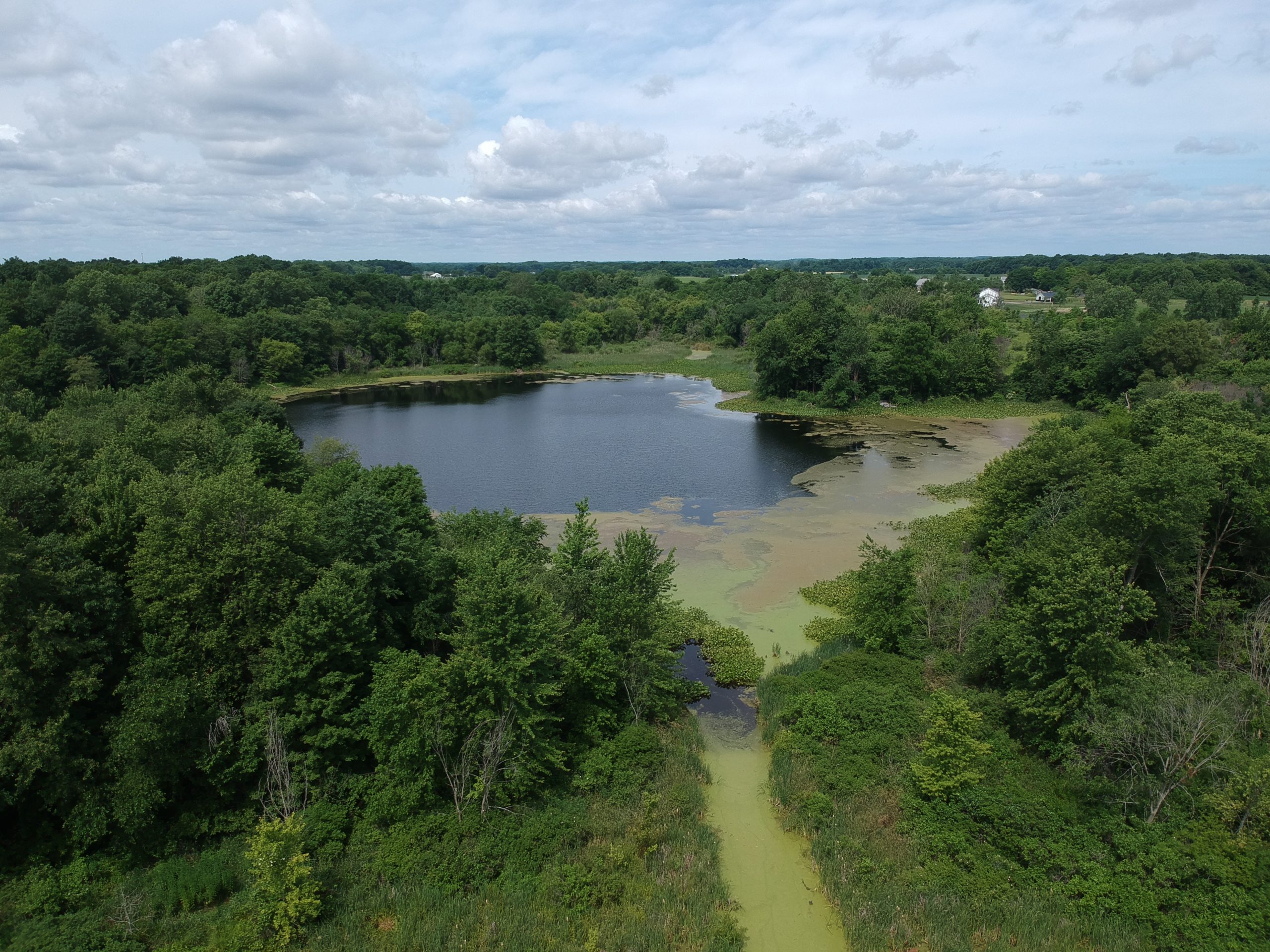
Fulk Lake, June 2021 - Travis Smola
After more than 50 years, the property had changed hands and now belonged to another farmer named Gale Harris. In July of 1948, Harris allowed two locals, Charley Wilson, and Ora Blue to go out on Fulk Lake fishing. What should have been a quiet afternoon was anything but. The men spotted what they described as a snapping turtle roughly the size of a dining room table. The men said the shell was approximately six feet across and was spiked. That detail of the sighting seems to indicate the creature was an alligator snapping turtle.
According to their eyewitness report, they spotted the big reptile on the surface. It eventually disappeared into the depths of the lake out of sight. Wilson and Blue returned to shore, where they told Harris about the sighting. According to the Michigan Quarterly Review, Harris was skeptical of the men's tale. That was until two days later when Harris and his friend, Orville Reese were repairing a barn roof and they spotted the turtle out in the lake. When they spotted it again the next day, they took a rowboat out for a closer look. This was a key moment because from then on, Harris was determined to share the huge turtle with the rest of the world.
Harris is a big part of this story. He began telling anyone who would listen about what was swimming around his lake. Some reporters picked up on the story and by March of 1949, Fulk Lake was drawing hundreds of curious onlookers and reporters hoping for their own glimpse of the beast.
Attempts to capture the beast.
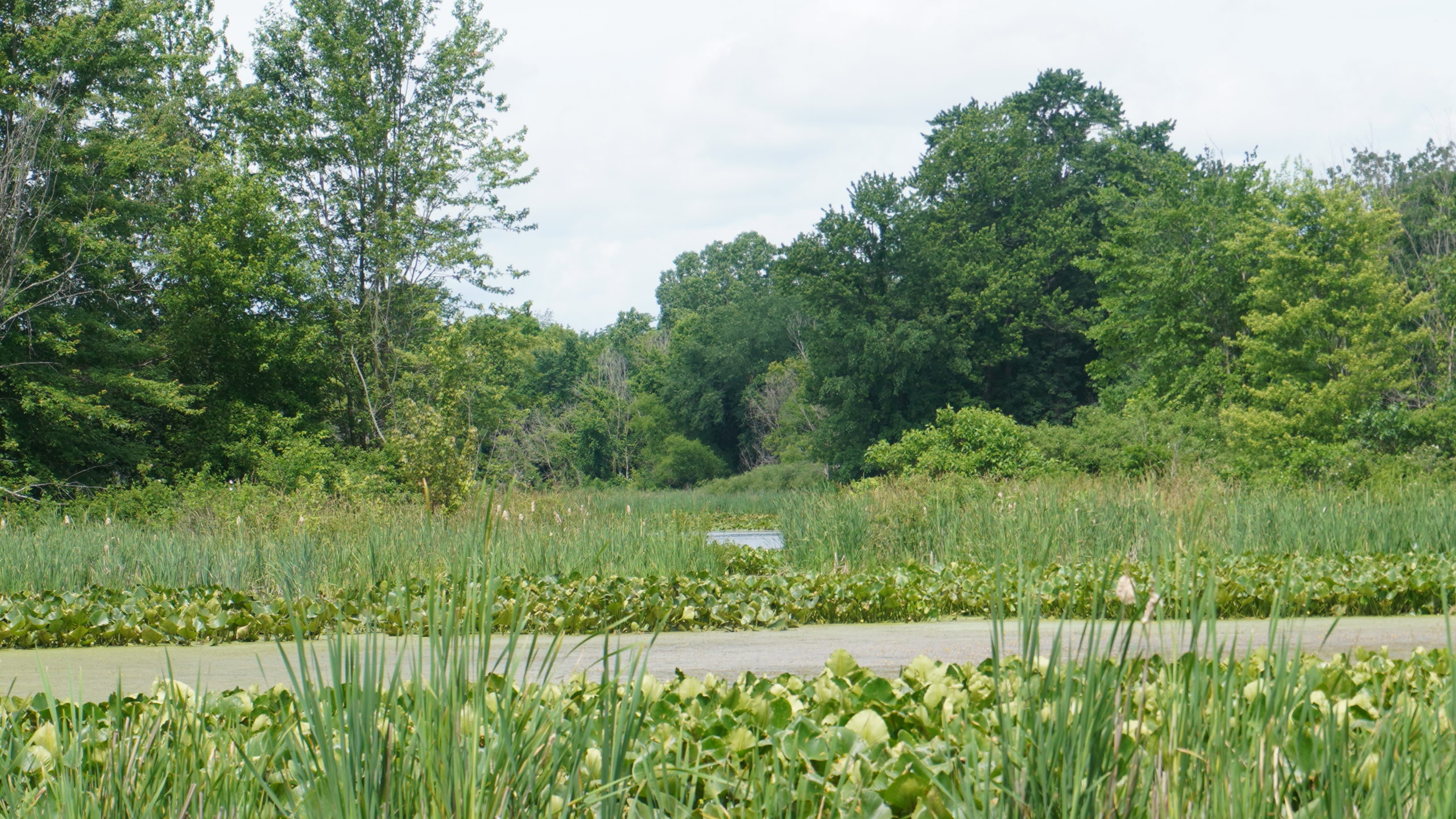
Travis Smola
There were some people who were critical of the story. Some believed it was nothing more than a hoax and told Harris as much. So, he decided he would prove the turtle's existence by capturing it alive. In March of 1949, His first attempt involved a wooden and chicken wire trap baited to hopefully draw Oscar out of the murky depths. This naturally drew a crowd who waited for hours for the giant turtle to arrive.
The story goes that Oscar did make an appearance. However, the trap was not strong enough and the turtle burst through it easily before disappearing back into the lake. Harris and his friends also tried a 300-foot net, but Oscar supposedly broke that too. They even tried releasing a sea turtle into the lake. The idea there was to catch Oscar looking for love. That did not work either. Attempts to spot the turtle with a special type of periscope also turned up nothing.
Harris managed to find two divers willing to dive into the murky depths in search of the turtle. Woodrow Rigsby tried first. Unfortunately, he had to cut the search short due to a suit malfunction. Another diver, Walter Johnson, spent over two hours on the bottom. Eventually he got stuck up to his waist in the muck at the bottom and Harris abandoned the idea of finding the turtle with a diver. Eventually, Harris even tried dynamite to kill the turtle and bring it to the surface. When that failed, he decided to drain the lake in the late summer of 1949. This was also allegedly when the last sighting of Oscar happened. Harris' efforts to drain the lake brought the lake down to only one acre. With over 200 curious bystanders watching, Oscar allegedly made one last dramatic appearance where the turtle ate a full-grown duck in a single bite.
Shortly after that, Harris' pump broke. He made a final attempt to drag the lake with a crane. Unfortunately, the hunt for the turtle had severely damaged Harris' reputation and finances. He was forced to finally give up the search in December of 1949 due to health issues. The farm was sold less than a year later. Meanwhile, heavy rains filled the lake back up to its original level and Oscar was never seen again.
Aftermath of the sightings.
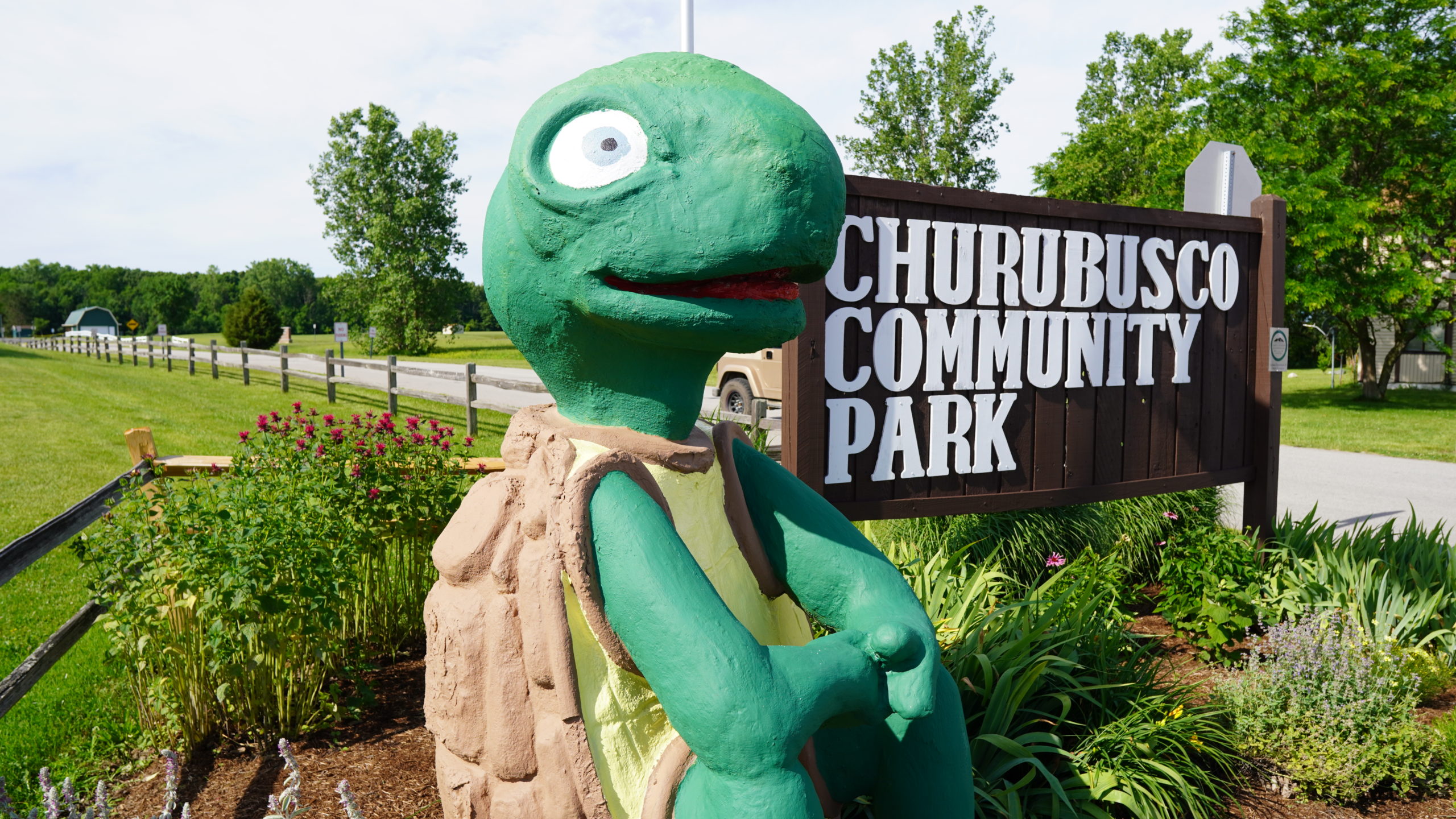
Travis Smola
Even though Oscar was never captured, it did not matter. The turtle made an indelible mark on Churubusco. In 1950, the town held its first Turtle Days Festival and they have been holding it every year since. It is marked with a parade, turtle races, live music, a 5k race, a poker run, and more. The Whitley County Historical Museum holds a few historical items from the turtle hunts. There is even a children's book on the subject.
Theories on what happened to Oscar vary. Some believe he died during the capture attempts and later sunk to the bottom, never to be seen again. Others swear that Oscar escaped to a different lake through a series of interconnected tunnels and canals leading out of Fulk Lake.
Perhaps the legend persists because this seems more likely than something like bigfoot. After all, the largest alligator snapping turtles ever have been in the 250-300-pound range. It is not much of a stretch to think the eyewitnesses simply over-estimated the size of a rather large, but normal, turtle. Even that 50-year span between the first sighting in 1898 and 1948 is not all that unusual. Alligator snappers are believed to be capable of reaching 200 years old in the wild. It is worth noting that the Indiana Department of Natural Resources says that the historic range of this species is mostly the southern part of the state. The last live one found there was in 1991. Still, that does not mean that there was not a large snapper in that lake at one point.
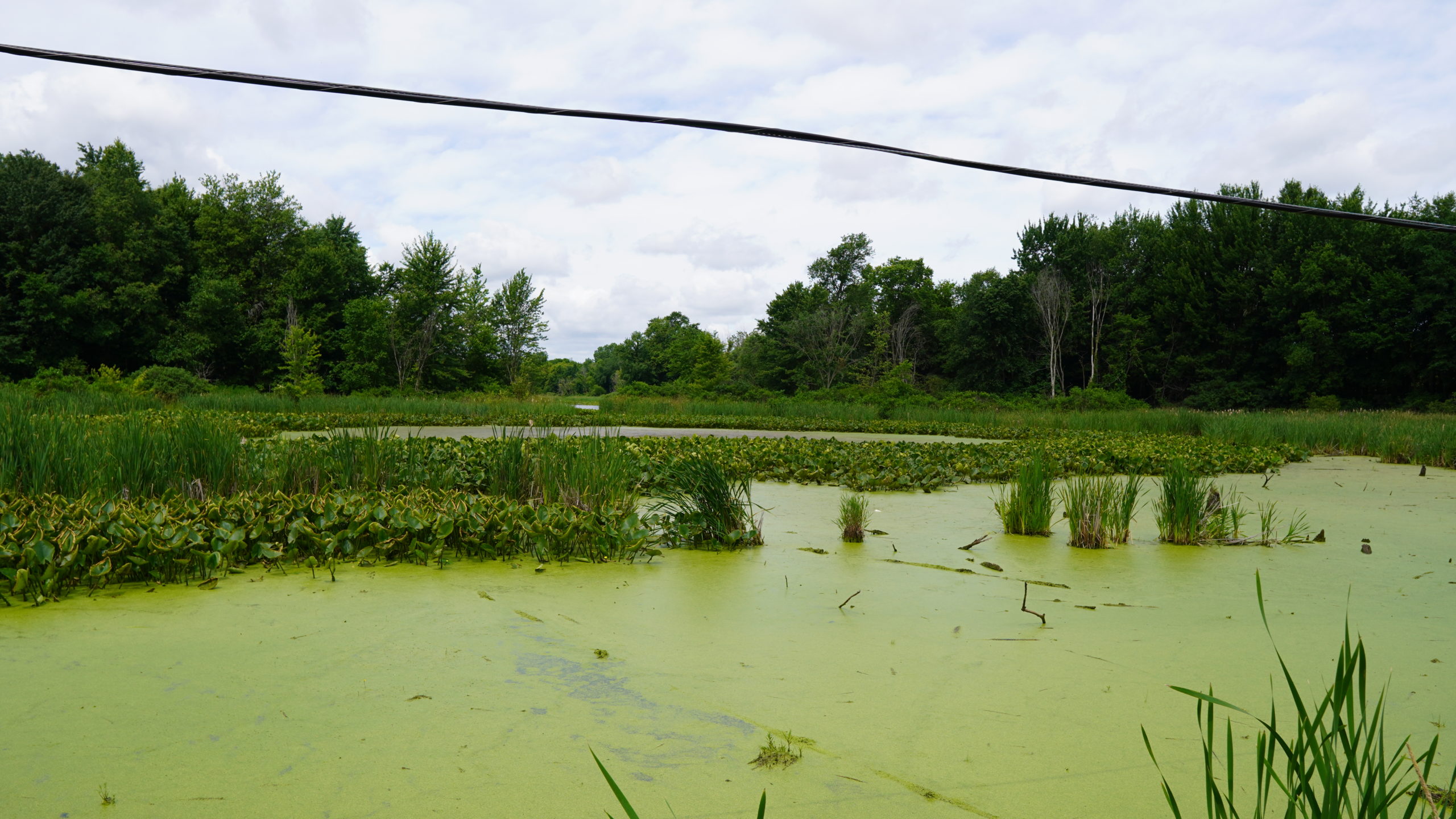
Fulk Lake, June 2021 - Travis Smola
It seems the lake has changed little since the great turtle hunt. The lake is on private property, but you can still catch a glimpse of it from the road. It recently went on the market with a $1 million price tag. On a warm June day, I stopped my Jeep along the dirt road to get my own glimpse of the lake. The algae-covered waters of the pond next to the road that connects into Fulk are dark and stained. Standing there, it reminded me of my visit to Loch Ness. Those dark waters could hold all sorts of secrets. It sets your imagination churning immediately.
In the end, it may be better that Oscar was never found. Because imagining what lurks beneath the surface is a lot more fun than actually knowing what is there. The fact that Oscar was never captured lets the legend persist for future generations to enjoy and speculate upon.
For more outdoor content from Travis Smola, be sure to follow him on Twitter and check out his Geocaching and Outdoors with Travis YouTube channels.
NEXT: THE AXIS DEER AND HOW THEY'RE IMPACTING PARTS OF THE UNITED STATES
WATCH
